How to Decorate a Living Room
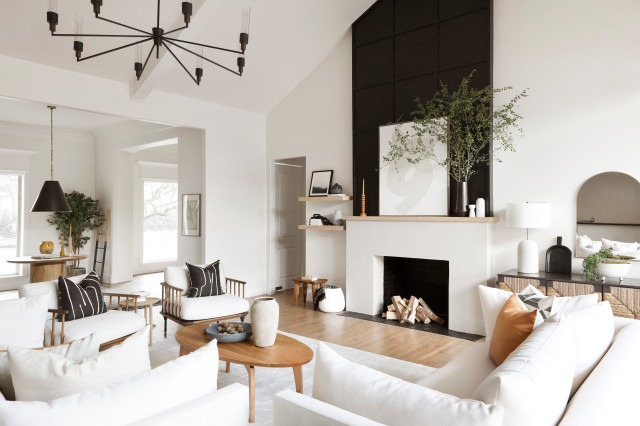
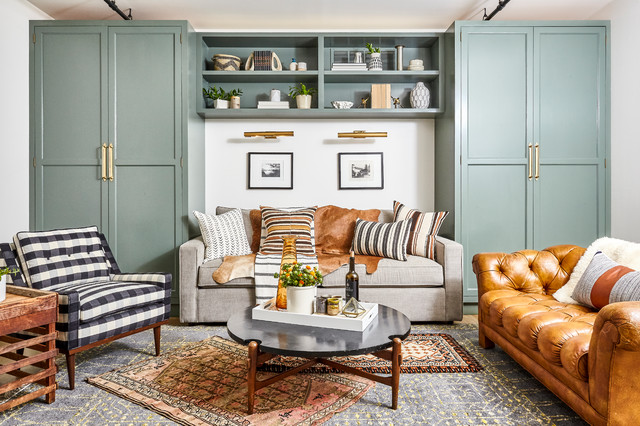
2. How to Decorate a Living Room – Contrast Your Neutrals
Beyond including some white and some black, decorating a living room with a variety of contrasting neutrals goes a long way toward making it feel rich and welcoming. In this example, the white walls, caramel leather, brass hardware, gray sofa and blue-gray cabinets all contrast with one another, which highlights their different finishes and undertones. This makes the palette feel rich even before other key elements, such as color, pattern and texture, are added.

3. How to Decorate a Living Room – Play With Texture
Texture is easy to overlook when decorating a living room, especially since we don’t see it so much as touch it. But it’s important for making a living room feel cozy, and that goes for plush textures that appeal to the touch and harder textures that add contrast. Include leather, cotton, wool, metal, stone, glass, plant life and as many other textures as you can.
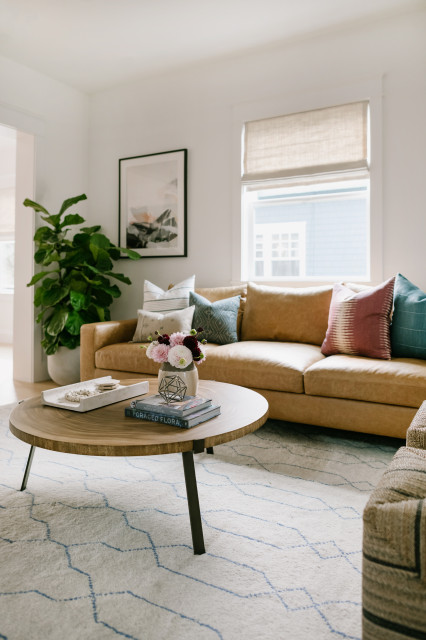
Pillows are a great place to start, especially if you’re decorating a living room on a budget. Look to other accessories and furnishings to add new materials to the palette, even in small doses.
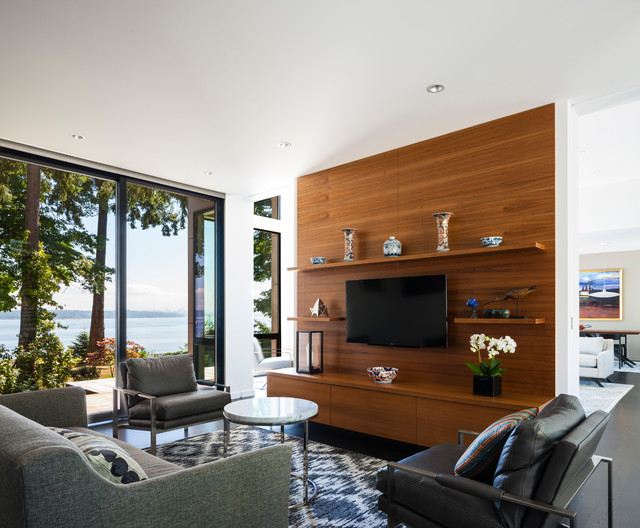
4. How to Decorate a Living Room – Work in Some Wood
We can’t talk about texture without talking about wood, one of the top materials for bringing a sense of warmth to a living room.
There are so many ways to add wood, any of which will make a space feel a bit more inviting. Consider wall paneling, side tables, movable stools, picture frames, sofa legs and carved pieces of art as just a few of the many options.

5. How to Decorate a Living Room – Mix Up Your Upholstery
Sure, most furniture stores give you the option of purchasing an entire living room set in matching upholstery, but that doesn’t mean you should do it. In a formal seating area, matching upholstery can give a sense of maturity and order, but if you want a living room to feel cozy and welcoming, mix and match your upholstered pieces to give the design a bit more personality.
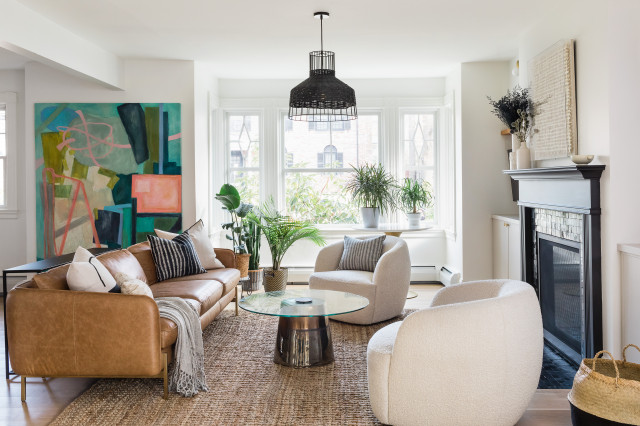
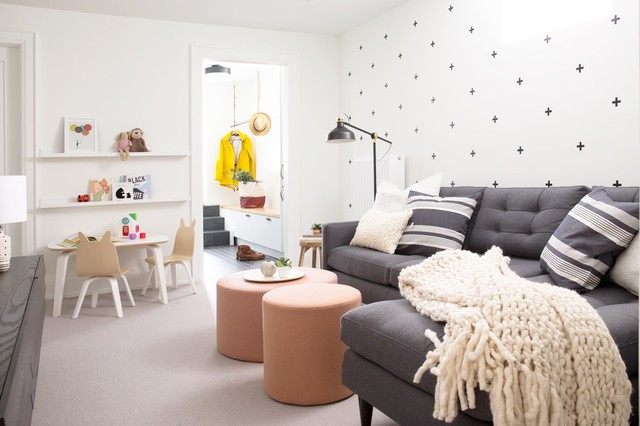
6. How to Decorate a Living Room – Choose Practical Fabrics
Speaking of upholstery, it’s especially important for living room seating to be not only comfortable but durable. What this means will depend on your family. You may have babies or small children, pets or not, and they may be messy or tidy. In general, mid-tone fabrics are the safest bet, as very light or dark shades will readily show soil and wear.

Leather is a great material for avoiding stains because it can be easily wiped clean when a spill occurs. However, it’s usually more easily scratched than most fabrics, so it may not endure animals as well. A leather that already has a broken-in look or a pattern can age especially well.
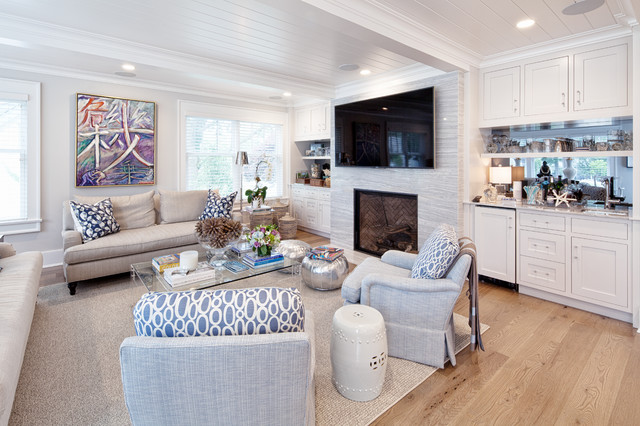

7. How to Decorate a Living Room – Add a Dash of Color
While you can create a beautiful space without any vivid hues, adding even a little bit of color to a living room can go a long way toward creating a relaxed and inviting atmosphere.

When in doubt, look to a cheerful blue — it’s a hue that usually everyone can agree on. It perfectly contrasts warm elements such as leather and wood, and it feels just neutral enough to work with basically any other future accent colors.

8. How to Decorate a Living Room – Add a Patterned Rug
Pattern is a powerful design tool, infusing a living room with energy and minimizing the appearance of stains or wear. A patterned rug brings these benefits to the “fifth wall” — the floor — simultaneously anchoring a seating area and giving the whole room a sense of life. Even if you already have carpeting, consider adding a rug to your seating area. The first time you roll it up to go to the cleaners after a big spill, you’ll be glad you had it there.

9. How to Decorate a Living Room – Choose Movable Tables and Stools
Lightweight tables, stools, ottomans and even side chairs that can be moved around easily make a living room much more comfortable, giving you and your family lots of options on a daily basis for putting your feet up, setting a drink down or seating an extra guest.
Use a few smaller pieces, such as the upholstered footstools seen here, to allow for movement of pieces closer to and farther from the main seating as needed.

10. How to Decorate a Living Room – Consider Conversational Distances
No matter how big your living room, there’s a limit to how large a seating group can be and still make sense for intimate conversation and cozy gatherings. A good distance between seats to facilitate conversation is about 8 feet, meaning if you have several sofas or a sofa and side chairs, the seating area should have a diameter of 8 feet, or 4 feet out from the center.
A huge, 12-seat sectional sofa may look great and be perfect for a party, but if you’re looking to create a cozy living room, it’s usually best to use fewer, smaller seating pieces and push them a little closer together.

11. How to Decorate a Living Room – Don’t Take It Too Seriously
A living room is a great space to embrace thoughtful disorder, such as through an artistic gallery wall, mix-and-match throw pillows, open storage baskets and fun furniture like this tepee-inspired tent.
Trying for perfect order will mean that anything out of place will stick out like a sore thumb, whereas accepting a bit of controlled chaos will mean the occasional dropped toy or draped blanket will look right at home.
- https://www.instagram.com/tongassf/
- https://www.linkedin.com/in/tongassf/
- https://www.pinterest.com/tongassf123
- https://www.facebook.com/TongassFashion


1. How to Decorate a Living Room – Mix Light and Dark
When a living room is all white and bright, it can feel too “clean” and unapproachable. When it’s all dark, it can feel like a cave. But mixing dark and light colors creates a dynamic look that has depth and balance. The design of any space benefits from the inclusion of at least a little white and a little black.